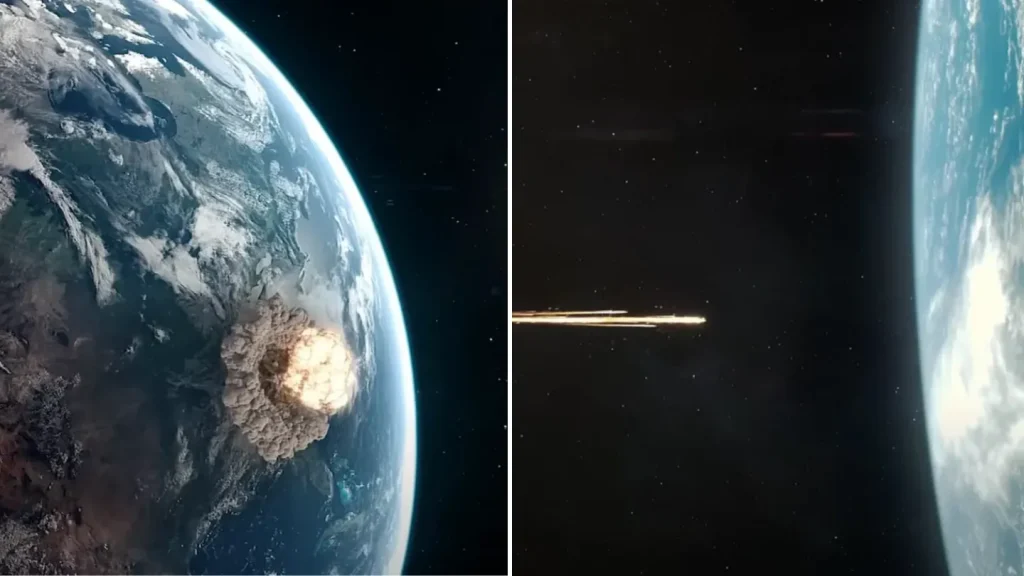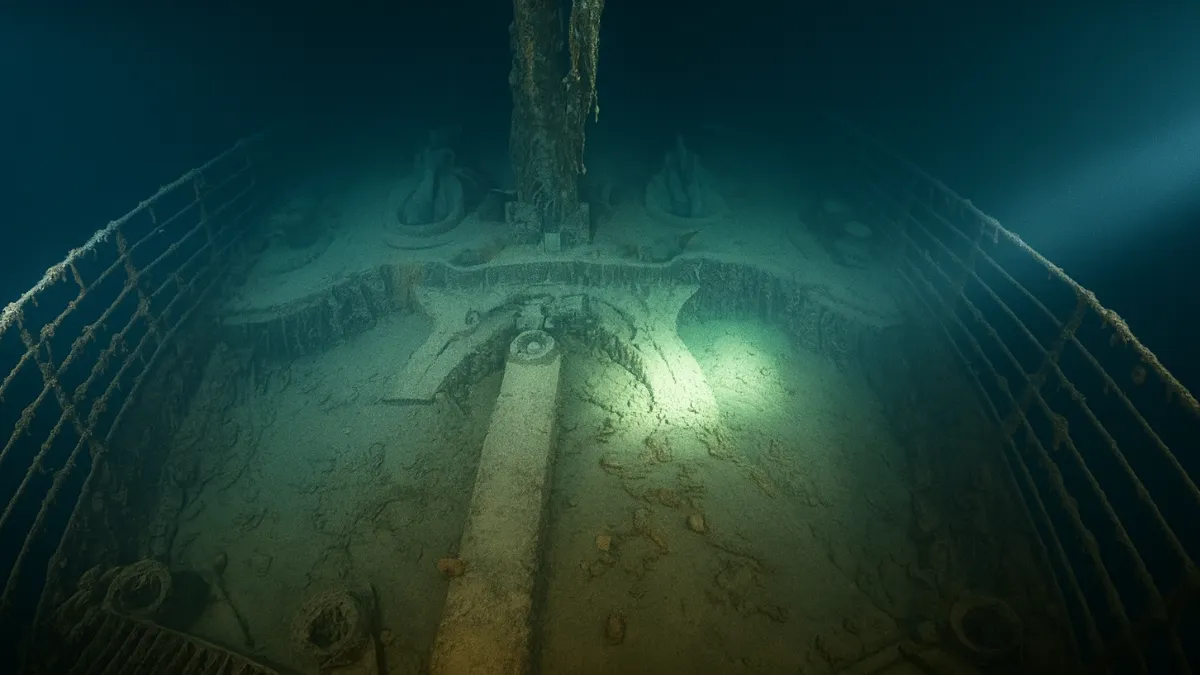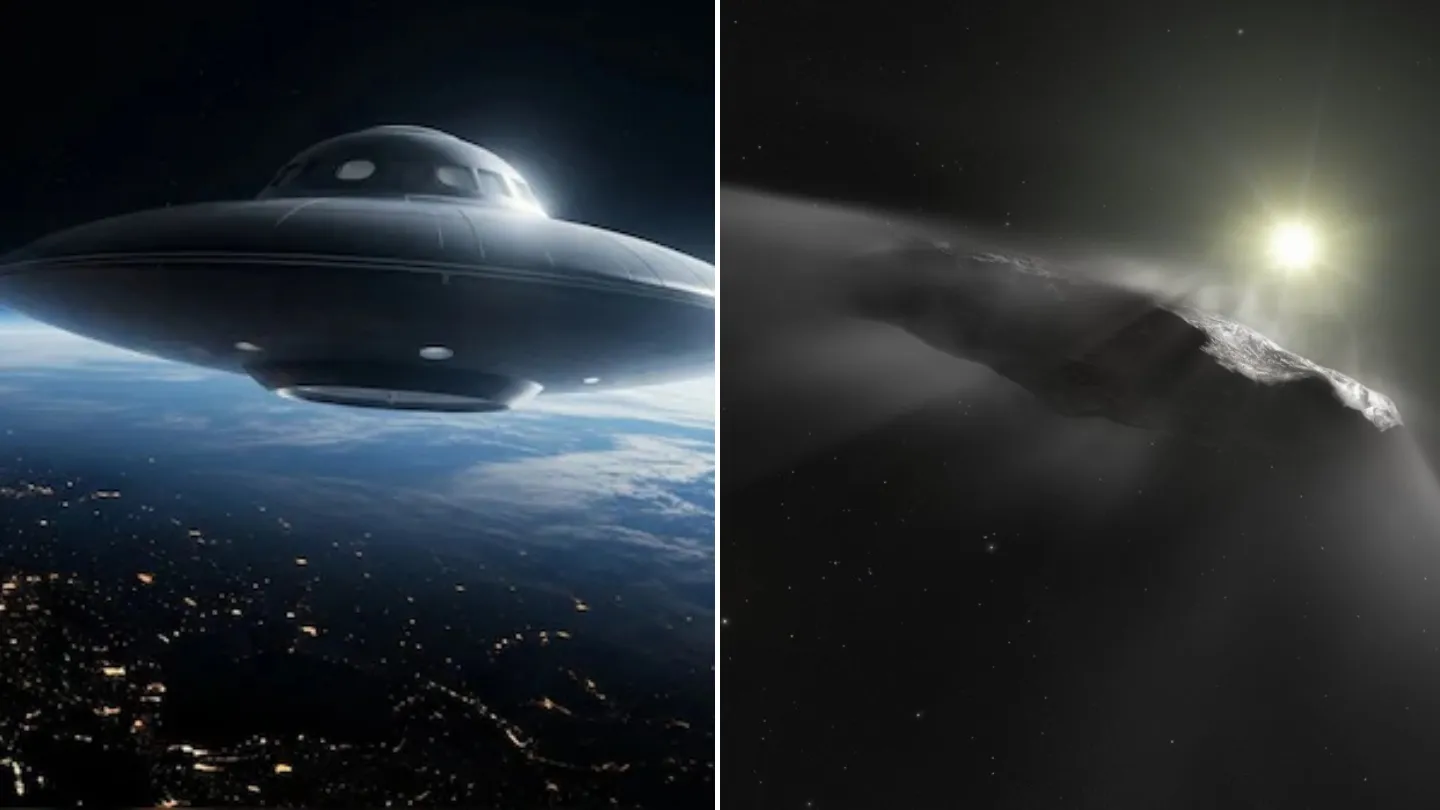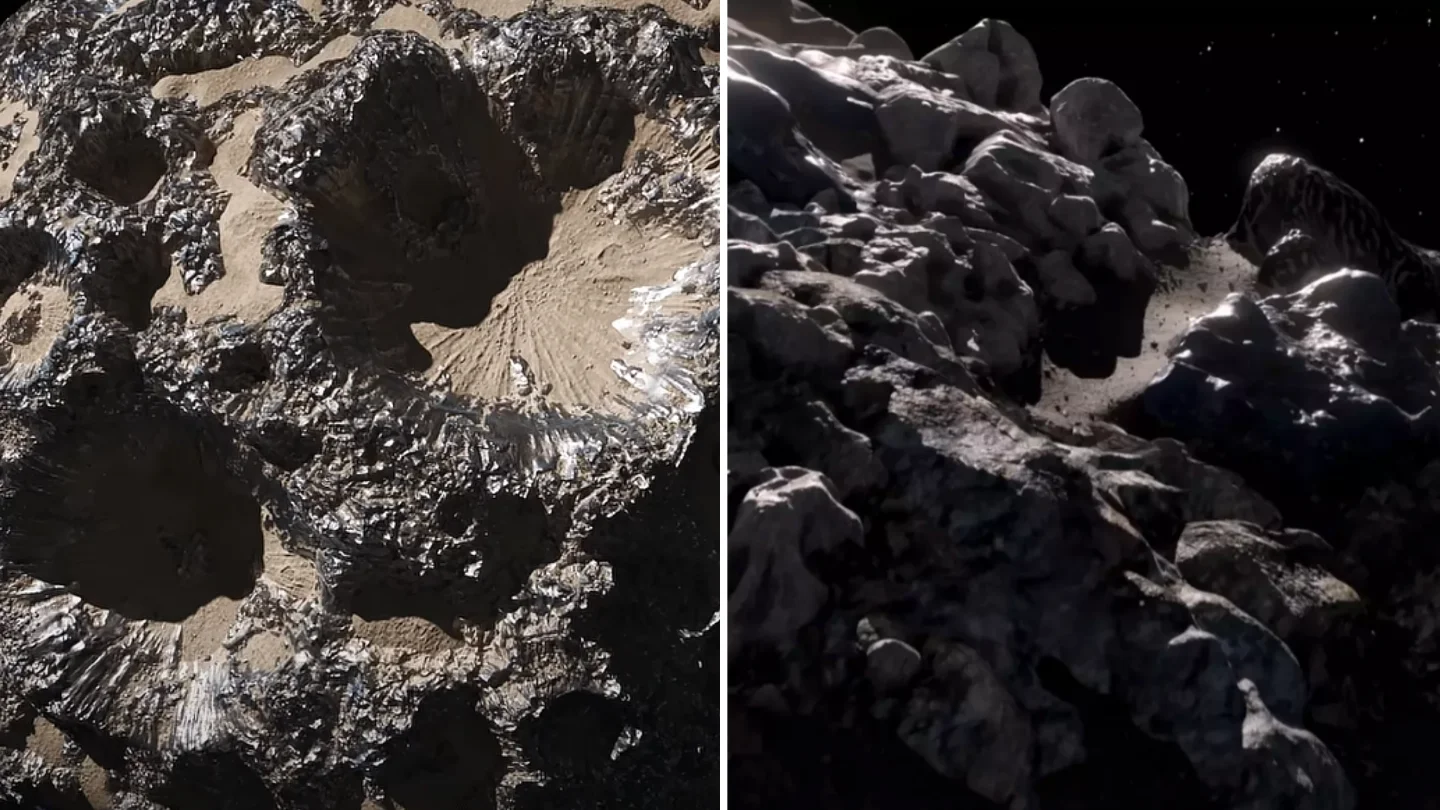A recent simulation released the alarming possible consequences of a collision between the Apophis asteroid, often referred to as the ‘God of Chaos,’ and our planet.
On April 13, 2029, an asteroid with a width of 340 meters will approach Earth, coming within 20,000 miles—closer than some satellites currently in orbit.
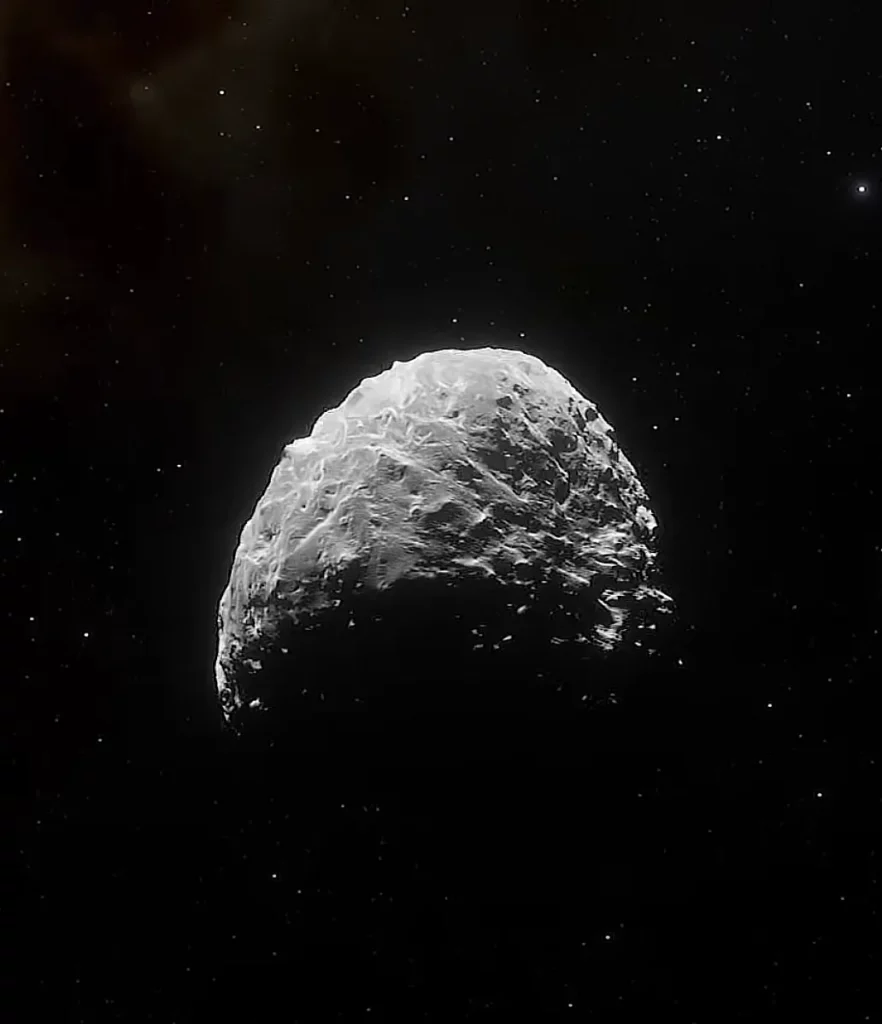
Scientists at NASA have reassured everyone that the asteroid will not collide with Earth during its flyby. However, the potential for another space object to change Apophis’ path has raised concerns among experts and the public.
Since its discovery in 2004, researchers have closely monitored the asteroid, named for the Egyptian deity associated with chaos and darkness.
Apophis will travel across the Atlantic Ocean at an impressive speed, finishing the journey in less than an hour.
NASA has stated that there is no immediate threat; however, a recent investigation by Canadian astronomers Paul Wiegert and Benjamin Hyatt examined the slight possibility of a smaller space object, approximately 0.6 meters long, potentially colliding with Apophis.
If this happens, it may change the asteroid’s path, possibly directing it toward Earth in the future.
While the chances of this happening are extremely slim, with experts suggesting the odds are roughly 1 in 250,000 for a future occurrence, the very thought has ignited both fascination and fear.
A digital platform, Cosmoknowledge, presented a simulation illustrating the potential consequences of an Apophis impact on Earth.

The simulation indicates that the asteroid’s kinetic energy at the moment of impact would match that of 1,000 megatons of TNT, which is similar to the destructive power of hundreds of nuclear weapons.
The scale of this impact, while not catastrophic enough to endanger planetary existence, could still result in billions of deaths and lead to significant climate chaos worldwide.
The simulation’s results have generated a flurry of responses across the internet.
A YouTube short showcasing a fictional collision has captured the interest of viewers, with many making comparisons to dangerous scenarios portrayed in blockbuster movies such as “Armageddon.”
The footage captures an asteroid impacting the Atlantic Ocean, resulting in a massive fireball and shockwaves that extend thousands of miles inland.
The imagery of the aftermath, showcasing debris being hurled into space only to descend once more as blazing asteroids, illustrates a stark and unsettling scenario of the destruction that may ensue from such an occurrence.
In light of these concerning illustrations, NASA has reiterated that Apophis will safely pass by our planet in 2029.
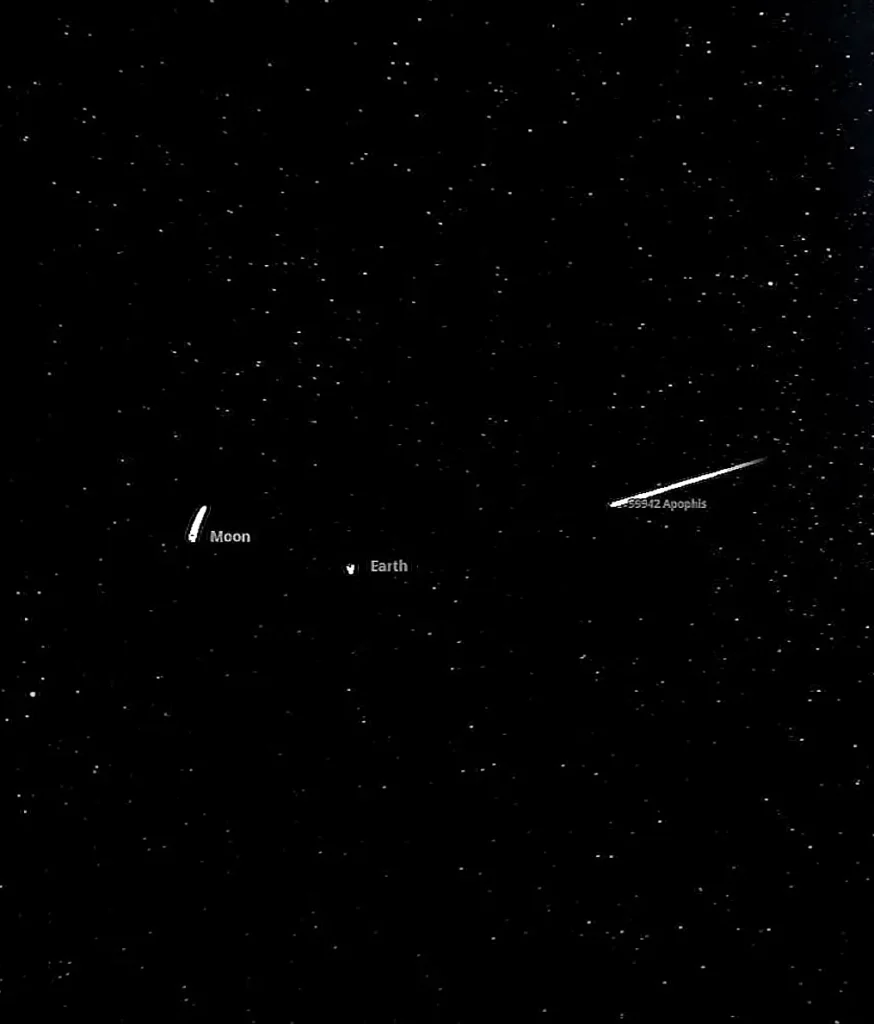
The agency has provided additional details, stating that while the asteroid will come within 20,000 miles of the Earth’s surface—closer than numerous satellites—there is no danger of an impact during that period.
Nonetheless, the video’s implication that “there is always a risk” has caused some viewers to feel uneasy, given the unpredictable future trajectories of the asteroid.
Russian scientists have expressed concerns about the asteroid’s trajectory, warning that Apophis could collide with Earth as soon as 2068 at an incredible speed of 15,000 miles per hour.
NASA has calculated the likelihood of an impact in 2068 to be 1 in 150,000, while Russian specialists have outlined approximately 100 possible scenarios for a collision involving Apophis and our planet.
A recent simulation reveals that an asteroid striking the Atlantic Ocean could generate a massive fireball and shockwaves reaching as far as Kansas, nearly 2,500 miles from the impact site.
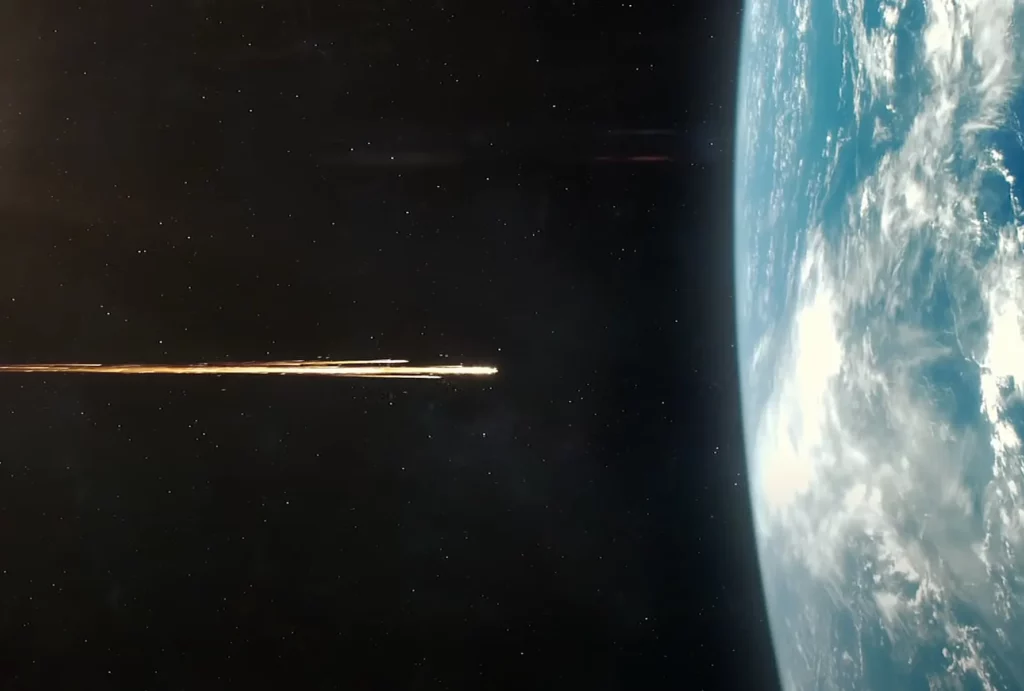
In addition to the unpredictability, earlier research from Los Alamos National Laboratory pointed to the potential for massive tsunamis in the event of an asteroid impact in the ocean.
A smaller asteroid, with a diameter of 250 meters, has the potential to generate massive waves upon impact, while Apophis, measuring 370 meters across, presents an even more significant danger.
The simulation illustrated the potential formation of a crater exceeding a mile in width and over 500 meters in depth, leading to widespread destruction in coastal areas.
In light of increasing curiosity, NASA has initiated the OSIRIS-APEX mission, set to closely examine Apophis during its flyby in 2029.
Amy Simon, the project scientist for the mission, detailed how the spacecraft will employ imagers, spectrometers, and laser altimeters to examine the asteroid’s surface and monitor the effects of Earth’s gravity on its orbit.
Researchers are optimistic that by collecting additional data, they will enhance their readiness for any possible future interactions.
The likelihood of Apophis colliding with Earth is very minimal, yet the simulation has sparked widespread curiosity and nervousness among the public.
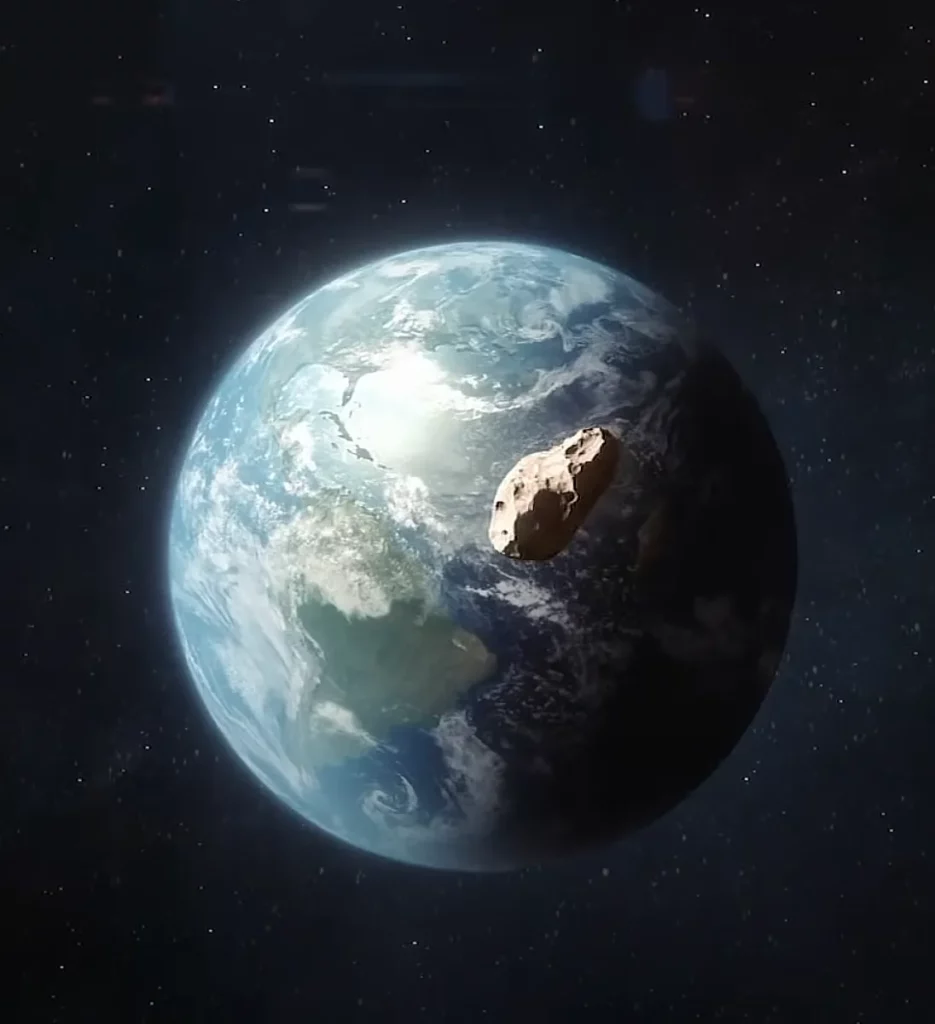
Some observers have expressed concerns about humanity’s ability to prevent a potential disaster should it occur.
Reactions to the YouTube short convey a feeling of powerlessness, as one viewer expressed, “The universe has its plan.”
If we find ourselves in the path of a rock, we are powerless.
Specialists currently emphasize that Apophis should safely pass Earth in 2029, but this asteroid underscores the unpredictable dynamics that exist beyond our planet.
As researchers delve deeper into the mysteries of Apophis and similar celestial bodies, global vigilance intensifies regarding potential dangers from beyond our planet.
As simulations and technological advancements continue to evolve, organizations such as NASA are taking proactive steps to ensure that humanity is ready for future challenges.
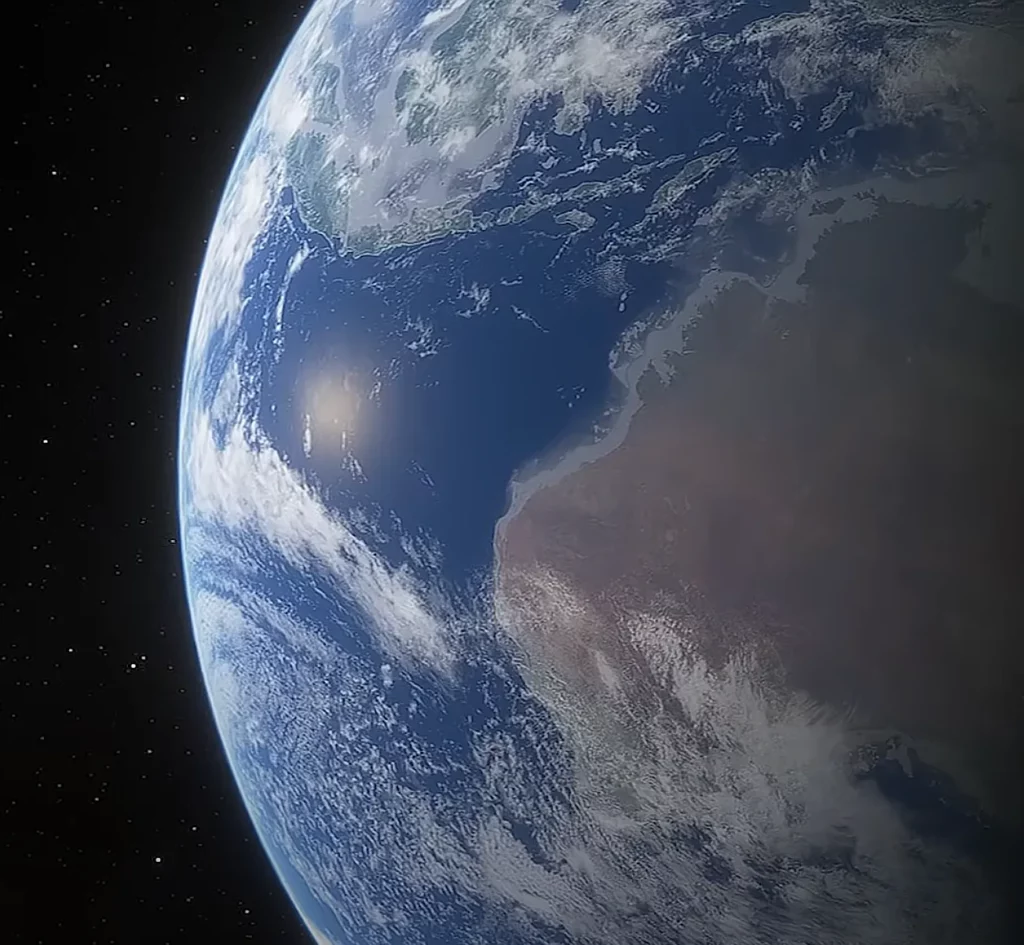
Regardless of Apophis’s actual risk in the future, its near-miss will be a significant occurrence, capturing attention and sparking interest in what lies beyond our planet, well beyond 2029.
Feature Image Credit: (YouTube/@cosmoknowledge)

